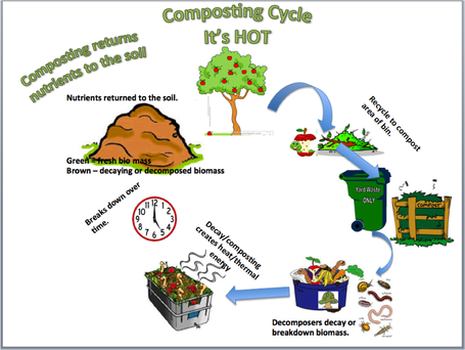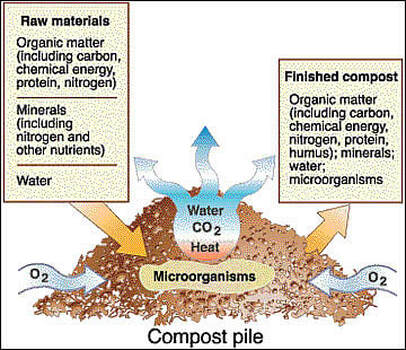COMPOST MAKING PROCESS
WHAT IS COMPOST?
Compost is what happens when organic materials—food scraps, coffee grounds, plant waste, and other organic yard waste—are decomposed through natural decomposition and chemical processes. Once the organic materials are collected, they’re stored in the best indoor or outdoor composter for a given space. Here, with proper heat and aeration, the organic matter is transformed into a soil amendment.
Why do people create compost and compost tea? Well, for one, it boosts the nutrient content of soil by encouraging the production of healthy bacteria, which break down the organic material to create nutrient rich humus. It also provides an eco-friendly alternative to fertilizer, suppresses pests and diseases, and improves soil texture.
Why do people create compost and compost tea? Well, for one, it boosts the nutrient content of soil by encouraging the production of healthy bacteria, which break down the organic material to create nutrient rich humus. It also provides an eco-friendly alternative to fertilizer, suppresses pests and diseases, and improves soil texture.
HOW DOES ONE START A COMPOST PILE?
For aerobic bacteria to begin breaking down materials into usable compost, you need four basic ingredients [2]:
- Green Material (Nitrogen source)
- Brown Material (Carbon source)
- Air
- Water
Steps to build a Compost Pile
If you would like to see me build a pile in real time with results? Then have a look at our excellent video guide to composting below! It really is a good ‘how-to’ guide, garnering over 15k views in it’s first month on YouTube from a small channel. It shows the complete process.
- To build a compost pile, you should assemble your materials over time. Particularly, brown materials, as they can be stored long term very easily.
- Create a layer of brown material, roughly 1-2 inches thick (5 cm)
- Add a layer of green material on top.
- Repeat until your pile has 2-4 layers of each, or a pile that is 6-8″ tall.
- Add some water to moisten the brown material.
- Mix the layers up using a pitchfork, shovel, or potato fork.
- Repeat steps 2-6 until you have created a pile that is approximately 3′ diameter, and 3′ tall (1m x 1m).
- Turn your compost. Keep turning it every few days to a week until it has decomposed. You will know it is ready when it is black, light.
If you would like to see me build a pile in real time with results? Then have a look at our excellent video guide to composting below! It really is a good ‘how-to’ guide, garnering over 15k views in it’s first month on YouTube from a small channel. It shows the complete process.
Useful Links:
How to start composting: https://www.permaculturenews.org/2023/05/29/how-to-start-composting/
Composting 102 – Building a Basic Compost Pile Written by Joe Foster in Compost,DIY,Gardening Tips
https://growitbuildit.com/how-to-make-a-compost-pile/
Wiki How to make a Compost Pile with graphics: https://www.wikihow.com/Build-a-Compost-Pile
How to start composting: https://www.permaculturenews.org/2023/05/29/how-to-start-composting/
Composting 102 – Building a Basic Compost Pile Written by Joe Foster in Compost,DIY,Gardening Tips
https://growitbuildit.com/how-to-make-a-compost-pile/
Wiki How to make a Compost Pile with graphics: https://www.wikihow.com/Build-a-Compost-Pile

